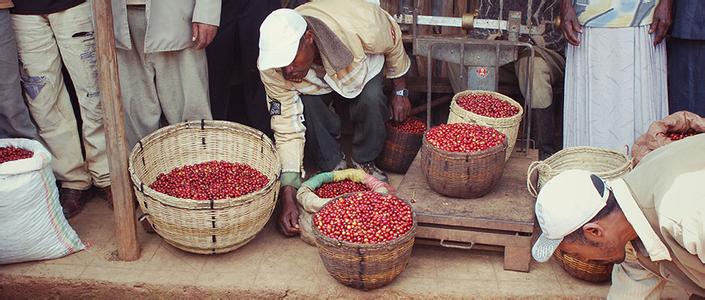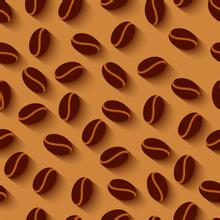Introduction to the flavor and taste of the cultural description of the origin of Ethiopian coffee bean story
Introduction to the flavor and taste of the cultural description of the origin of Ethiopian coffee bean story
There is a small town in southern Ethiopia called Kafa, which is the earliest birthplace of coffee. But now Ethiopia is most famous for coffee beans with trademarks such as Hal, Sidamo and Yega Chefe. In fact, many of Starbucks' raw materials come from these three brands. Ethiopia is now the world's eighth largest coffee exporter, accounting for only 3% of the global coffee trade. Bloggers can just remember that the best and most expensive coffee in the world is Harar coffee.
It's so cheap to have a cup of coffee anywhere in Ethiopia, even in a coffee bar at the Sheraton Hotel, it's only two bills, just one yuan. If bloggers want to buy coffee in Ethiopia and bring it back to China, they can buy it in a coffee store in Addis Ababa. You can choose coffee beans according to the recommendation of the shopkeeper. Of course, you can also ask for a few cups for comparison. After weighing, the shopkeeper will immediately grind the coffee powder for you and provide vacuum packaging for you. The price is generally 30-50Birr (15-25 yuan). The same thing with the Starbucks trademark is estimated to sell for $20 to $40. I bring back some coffee powder from Ethiopia every year, but what I bring back is only shape, but what I can't bring back is the charm of Ethiopian coffee.
Oxfam estimates that once Ethiopia acquires the trademark rights of these three places of origin, it will increase Ethiopia's revenue by US $88 million a year. However, Starbucks challenged the US Trademark Office because Starbucks first applied for Sidamo as a trademark as early as two ○○ four years ago, and although the case is still under review, the first applicant has the upper hand. The Ethiopian ambassador to the United States negotiated with Starbucks and received a response: "Please talk to our lawyer directly." However, in ○○ six years, the United States Trademark Office approved Ethiopia to own the trademark "Yega Xuefei", while the names of the two producing areas, Sidamo and Harald, are still under consideration. Starbucks hired a large team of lawyers to step up defense firepower in an attempt to prevent Ethiopia from taking control of trademarks in two other producing areas. In November 2006, Starbucks' newly appointed senior deputy general manager du Hei (Dub Hay, the so-called "big shot" who visited Yunnan, China last year) even published a film in "You Tube", openly protesting to Ethiopia that it was illegal for place names to apply for trademarks, and suggested that the authorities of the country should switch to origin certification systems, such as Jamaica Blue Mountain and Hawaiian Kona Coffee, which would also provide protection for consumers. The film attracted tens of thousands of views in a month, but angered the US media and humanitarian groups, saying that Starbucks was ugly. Roberta Hutton, a lawyer representing Ethiopia, said: "Duhei is talking nonsense. Ethiopia's move is aimed at protecting valuable goods and consolidating due intellectual property rights." Ethiopia is just adopting Starbucks' trademark protection strategy, and why do others have to make it difficult for others to do so? Getachew Mengistie, director of Ethiopia's Bureau of intellectual property, said: "the certification system proposed by Starbucks is not feasible because poor, illiterate coffee farmers have no room to perform additional paperwork, and doing so will only increase unnecessary fees, which will not increase the price and will not help farmers' income. The purpose of our application for trademark rights is to enable farmers to have a better income so that they can sleep on mattresses instead of on the ground, have at least one meal to eat every day, and have the ability to send their children to school. Do you have to suppress even this humble request? "on the one hand, the US media counted Starbucks down, and even criticized Starbucks as" a modern version of colonial hegemony, seizing the high-quality coffee passed down by Ethiopia for thousands of years. " Although the language went a little too far, under the strong pressure of public opinion, du Hei finally made a public apology and withdrew the statement that "Ethiopia's trademark application is illegal."
At the end of the story, it only makes the blogger feel deeply that Starbucks, which was full of enthusiasm and ideal for coffee, has been replaced by money and black heart after its success. It turns out that the founding fathers of Starbucks will abandon Starbucks to buy Biz coffee, whether it is to regain the ideal of the old days. Are the so-called successful people who are "immoral for business, rich and unbenevolent" really the only survivors in the world who win or lose? Fortunately, there is still hope in this world, so bloggers often say: although often disappointed, but still look forward to a better tomorrow! Because "dream is the most beautiful, hope to be happy!"

Important Notice :
前街咖啡 FrontStreet Coffee has moved to new addredd:
FrontStreet Coffee Address: 315,Donghua East Road,GuangZhou
Tel:020 38364473
- Prev

Addis Ababa: in the place where coffee originated
When the slow secretion of oil makes dark brown coffee beans shine, it is time to grind coffee. There is no bean grinder, and wooden pestles and mortar are completely used to mash the coffee beans in the coffee ceremony. In this way, it is destined that the coffee powder will not be too delicate and looks similar to the grinding degree of the bean grinder. Such a fine powder is just right for the next step of brewing coffee.
- Next

Flavor description of Sidamo Lion King Coffee Bean introduction to the taste characteristics of regional treatment of varieties
Flavor description of Sidamo Lion King Coffee beans the taste characteristics of the varieties are introduced: medium sweet and sour sun berry aroma, citrus aroma, slightly fermented fruit, fruit wine aroma. Palate: comfortable and interesting sour fruit, good sweetness and low thickness. Baking degree: the mid-baked Sidama taste is close to the floral flavor, but about a little earthy. Wash it with some nuts.
Related
- Detailed explanation of Jadeite planting Land in Panamanian Jadeite Manor introduction to the grading system of Jadeite competitive bidding, Red bid, Green bid and Rose Summer
- Story of Coffee planting in Brenka region of Costa Rica Stonehenge Manor anaerobic heavy honey treatment of flavor mouth
- What's on the barrel of Blue Mountain Coffee beans?
- Can American coffee also pull flowers? How to use hot American style to pull out a good-looking pattern?
- Can you make a cold extract with coffee beans? What is the right proportion for cold-extracted coffee formula?
- Indonesian PWN Gold Mandrine Coffee Origin Features Flavor How to Chong? Mandolin coffee is American.
- A brief introduction to the flavor characteristics of Brazilian yellow bourbon coffee beans
- What is the effect of different water quality on the flavor of cold-extracted coffee? What kind of water is best for brewing coffee?
- Why do you think of Rose Summer whenever you mention Panamanian coffee?
- Introduction to the characteristics of authentic blue mountain coffee bean producing areas? What is the CIB Coffee Authority in Jamaica?

